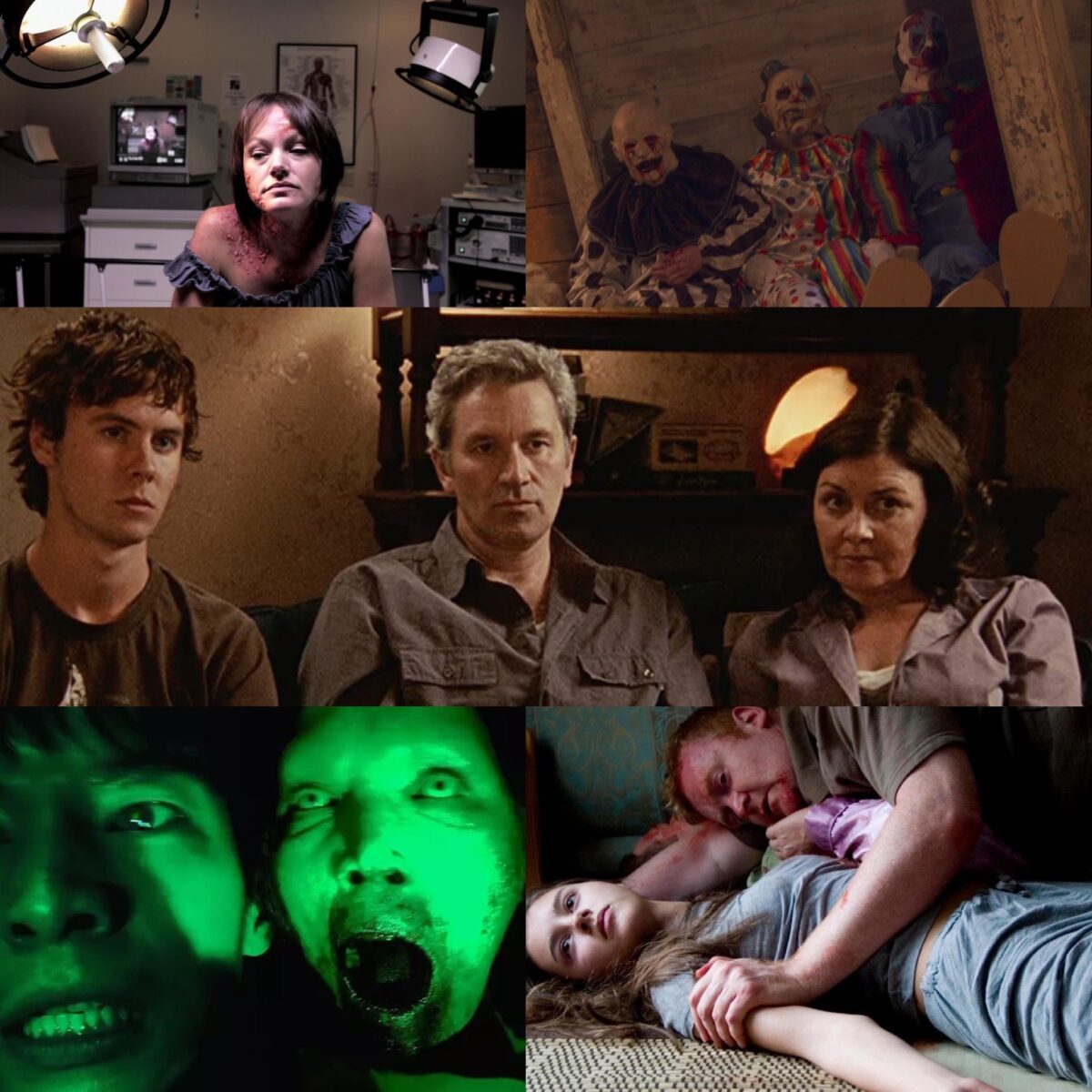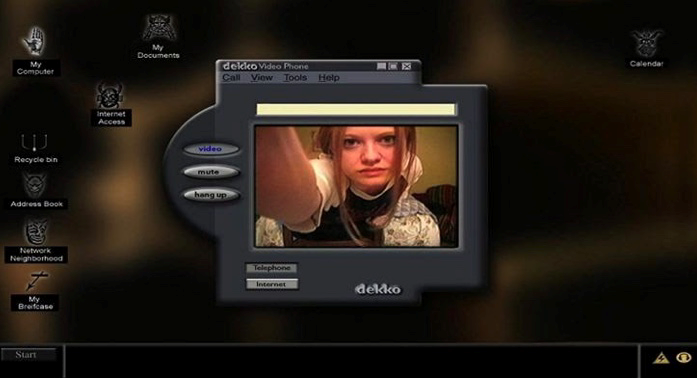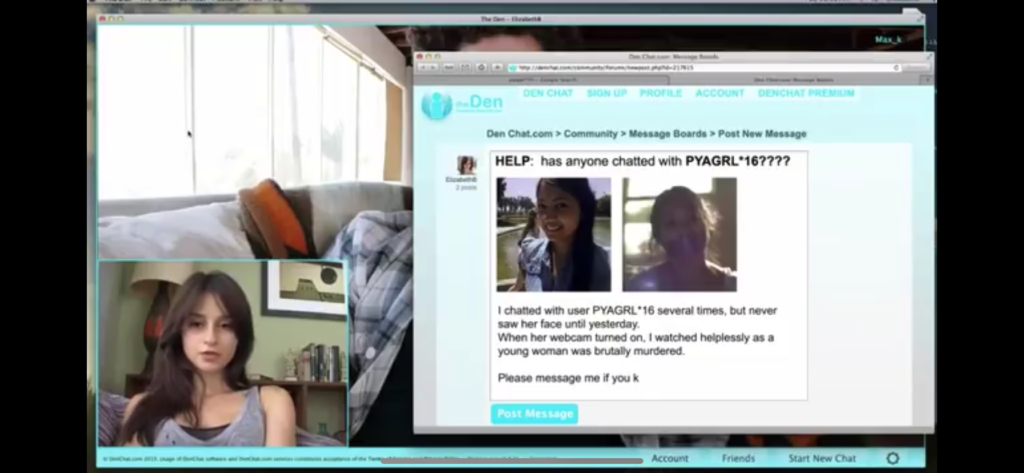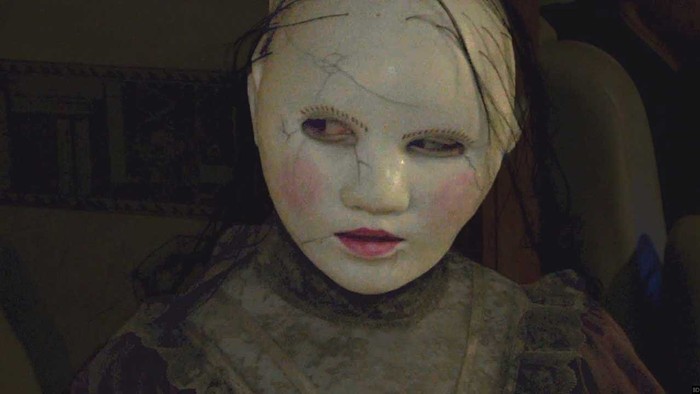
1- As Above, So Below (Directed by John Erick Dowdle, 2014)
Scarlett (Perdita Weeks) is a devoted archaeologist who is desperate to continue her deceased father’s search for the Philosopher’s Stone. After breaking codes to unearth the stone’s location, Scarlett and a group of fellow adventurers head down into the underground of Paris to find the world’s biggest treasure.
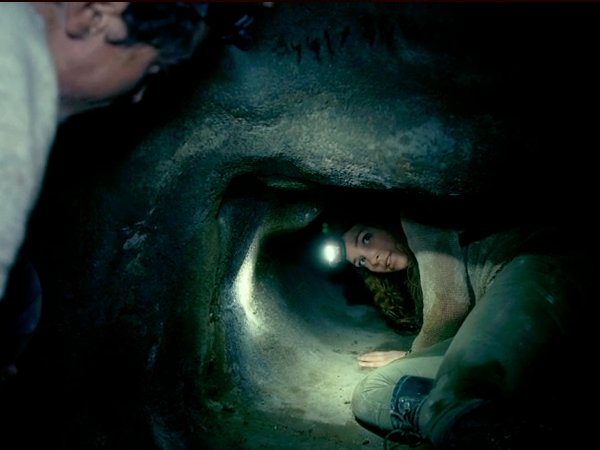
Deep in the catacombs lies an ancient but deadly secret, and just as we follow the camera scurrying through the strange corners and enveloping tunnel, we also emotionally accompany the group on their psychological journey to hell. Heaps of the tension rely on the film’s overtly nightmarish setting, it’s certain that no one is immune to the claustrophobic nature that lies underneath. Yet, the immensity of the environment refuses to overshadow As Above, So Below’s soulful arrangement. Without even realising it, something quite sinister happens within the character dynamics, as more and more about their backstories are unearthed. Over time, a sense of cathartic realism is released, as if the catacombs dig out buried secrets, making for a haunting tale surrounding ego, denial, grief, and inner content.
2- Noroi: The Curse (Directed by Kōji Shiraishi, 2005)
Masafumi Kobayashi (Jin Muraki), a notable paranormal researcher, suddenly goes missing after finishing a documentary on supernatural occurrences in Japan.

Noroi is unlike the barrage of found footage films swinging about. A tonne of credit is owed to the subgenre, but a lot of narrative angles have been done and dusted many times before. However, when it comes to Noroi, director Kōji Shiraishi uses the recycled ‘ancient demon’ paradigm and transports the legend into unknown territory. Japanese horror is rooted deep in the psyche, where cinema acts as a probe to provoke your own individualized versions of terror. Noroi meshes in countless themes from ghosts, urban legends, parasites, rituals, and mutilation (to name a few); and in doing so Shiraishi dares the viewer to not be completely immersed in this devilishly macabre story. Purposefully teetering on the side of dullness is the film’s utilization of the ‘found footage’ method. Every scene is bathed in the ordinary and it’s very realistic, with overlapping dialogue, moments of silence and pauses, and a monotonous palette, creating an eerie sense of realism as if these tragedies really did happen. Sometimes it’s the stories that are drenched in the humdrum of everyday life that ignite a surging, dreaded fear.
3- The Fourth Kind (Directed by Olatunde Osunsanmi, 2009)
Dr. Abigail Tyler (Milla Jovovich), a psychologist in rural Alaska begins to suspect that the recurring haunting scenarios her patients are experiencing surround a string of alien abductions.
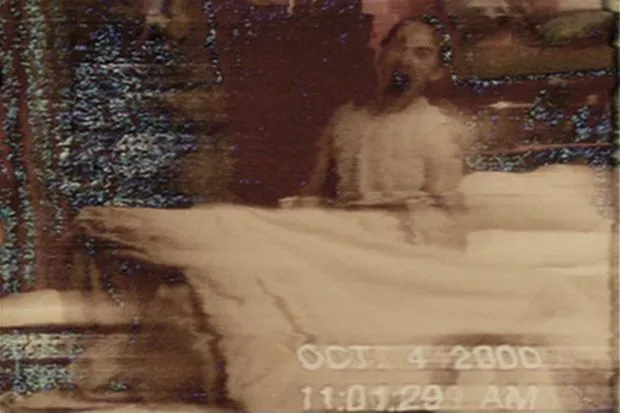
Sci-fi cinema has a special bond with horror. They both flourish in the obscure, and they both aim to explore consequences. The Fourth Kind is a gleaming example of what can happen when these two genres marry. In short, the film is an epic report of how losing someone will eventually deteriorate your own conscious self, in emotional form the living also withers away. The Fourth Kind savours the sensitive tribulations surrounding trauma, but the narrative is not necessarily the film’s sole trophy point, instead, the return to meta-horror through the 1990s-esque storytelling holds a great X-factor. At the beginning of the film, a prelude is shown introducing the actors whilst they state their roles, which are “based on true stories”. Whilst, this element could fall into the gimmick category, it unleashes a certain sensibility that makes you ponder over the whole alien debate.
4- The Houses October Built (Directed by Bobby Roe, 2014)
Five friends set out on the road to tour some of America’s most notable haunted house attractions. Along the way, plenty of scares are had and laughed over, yet they can’t shake the feeling that something or someone may have sadistic plans for them.

All Hallows’ Eve is essentially Christmas for horror hounds. Carved pumpkins, spooky decor, and crisp autumn nights introduced in October are perfectly paired with a good old-fashioned horror. Halloween (1978) and Hocus Pocus (1993) may be ideal watches, but sometimes it’s nice to spice it up and add a new film into the mix. This is exactly where The Houses October Built fits in. The film takes aim at the scary truth behind these horror haunts that tour up and down the country during Halloween. These events are always jam-packed with fright-seekers waiting to be taunted and prodded by the ‘haunt’s’ actors. But what if these performers have something more sinister up their sleeves? Director Bobby Roe introduces this underlying fear that you won’t even know you have. Tourist attractions ask for our trust, and quite naively we give it to them. Not only is the premise alone unsettling, but the set design of the attractions and buildup all also contribute to the ominous world Roe implicates. Just like the tourist traps themselves, Roe is determined to put on a rip-roaring show that revels in the gory theatrics and sets up such an immersive ride that you’ll add it to your annual Halloween watchlist.
5- The Medium (Banjong Pisanthanakun, 2021)
A family from the Isan region of Thailand begins to suspect that one of their own has become possessed by a benevolent ancient force.
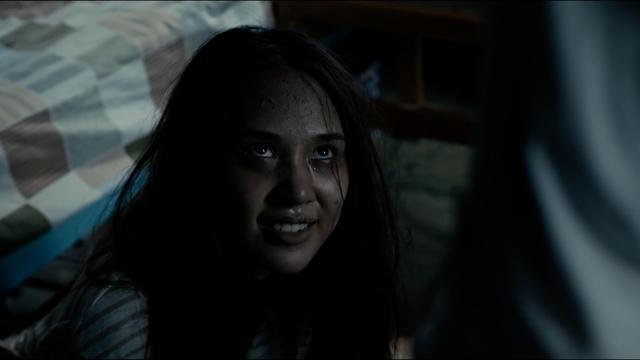
The Medium is a rattling experience that simultaneously demands attention and threatens the viewer’s disposition for horrific material. Laid out in a mockumentary format is the heartfelt tragedy that expands upon the rulings within Shamanic culture in the contexts of Isan religion. The film is set in Isan, the northeast region of Thailand. Within this setting Shamanism is commonly practiced, with a strong backbone for the religion surrounding the presence of ‘being’ and how everything in nature has a soul, not just humans. As the film progresses, this inherent belief of transcendence through the other is explored, leading the viewer on a complex journey into alternative cultures and how ancestral practices are inherently rooted in modern customs. The Medium packs in the aforementioned heavy content all within the 130 minute time frame. But, not for one second does the film dwell, as themes such as cannibalism, incest, assault, psychological torment, exploitation, and self-mutilation amalgamate to compose a harrowing descent into utter insufferable chaos. The film will test the viewer’s strength for disturbing content and will leave you perplexed over the unsettling third act.
6- What We Do in the Shadows (Directed by Jemaine Clement & Taika Waititi, 2014)
Vampire roommates Viago (Taika Waititi), Vladislav (Jemaine Clement), Deacon (Jonathan Brugh), and Petyr (Ben Fransham) go about their daily routine as a documentary crew films them.

What We Do in the Shadows began as a short film in 2005, which captured the feature film’s iconic immortal-themed banter. After garnering success, Jemaine Clement and Taika Waititi took the adapted short to the next level, with the project now standing as a growing franchise, including two television spin-offs and an upcoming sequel. The nocturnal characters are what pushes the film’s hilarious remarks to the next level, as the deadpan and slightly off-kilter jokes mime other mockumentary projects, especially The Office (UK). But amidst the galore of giggles is the entire reality that is presented. We don’t simply follow the multi-generational bloodsuckers going about their day-to-day routine, Clement and Waititi insist on throwing unexpected hurdles such as werewolf rows, vampire politics, and the turn of new creatures into the mix. In no time, an entire underground world of beastly beings is unearthed, setting the scene for laugh-out-loud gags and some super gnarly moments.
7- Creep (Patrick Brice, 2014)
Aaron (Patrick Brice) works as a freelance videographer who answers an online ad to film Josef (Mark Duplass) for the day as part of a memorial video of himself for his unborn child. His requests are immediately strange, but as the day continues Aaron begins to suspect that something sinister may be round the corner.
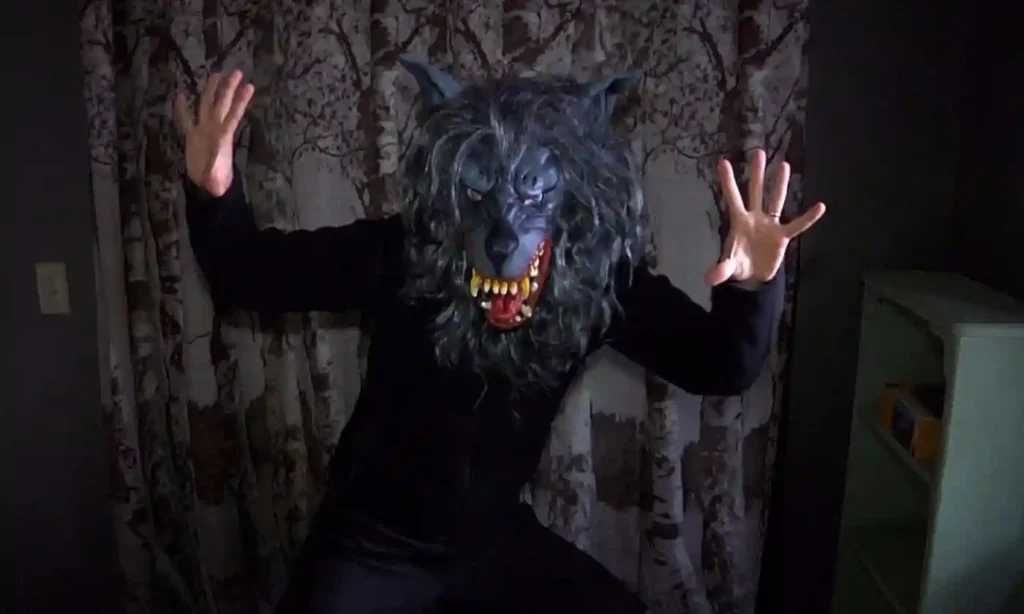
Creep does exactly what it says on the tin. Throughout the entire film nothing entirely dramatic happens, nor is there an abundance of jump scares, blood, or even much absurdity. Creep gets under your skin in a much more upsetting manner that works in a menacingly slow way. The threat level glides in so eerily that before the viewer knows it they are overcome with an overarching sense of dread. The film thrives in this ambiguity that shields away from direct answers. Patrick Brice continuously personalizes Josef’s actions, as if his strange (yet seemingly harmless) motives are just exaggerated advances that we all experience at one point or another. Of course, a knife wielding maniac wearing a mask would get anyone’s fight or flight instincts pumping, but we all know the rarity of the situation. Now imagine something much more ordinary. Some strange but slightly friendly man comes up to you for small talk, nothing untoward, but now imagine that you cant shift his lingering gaze as he innocently darkens the conversation. The awkwardness of not being able to escape an unfamiliar character is something that many people have experienced. Nine times out of ten, you’ll eventually manage to slip away, however, Creep reminds us of the alternative. Josef latches on to both Aaron and the viewer, allowing Creep to tap into intrinsic fears and taunt the threat of ‘the other’.
8- Man Bites Dog (Directed by Rémy Belvaux, 1992)
Ben (Benoît Poelvoorde) is a sadistic serial killer with zero remorse. Joining him on his killing rampage is a crew of documentary filmmakers who record his crimes. At first, the crew maintains a backstage role, but they soon find themselves enriched by the opportune violence, eventually turning into ruthless accomplices.
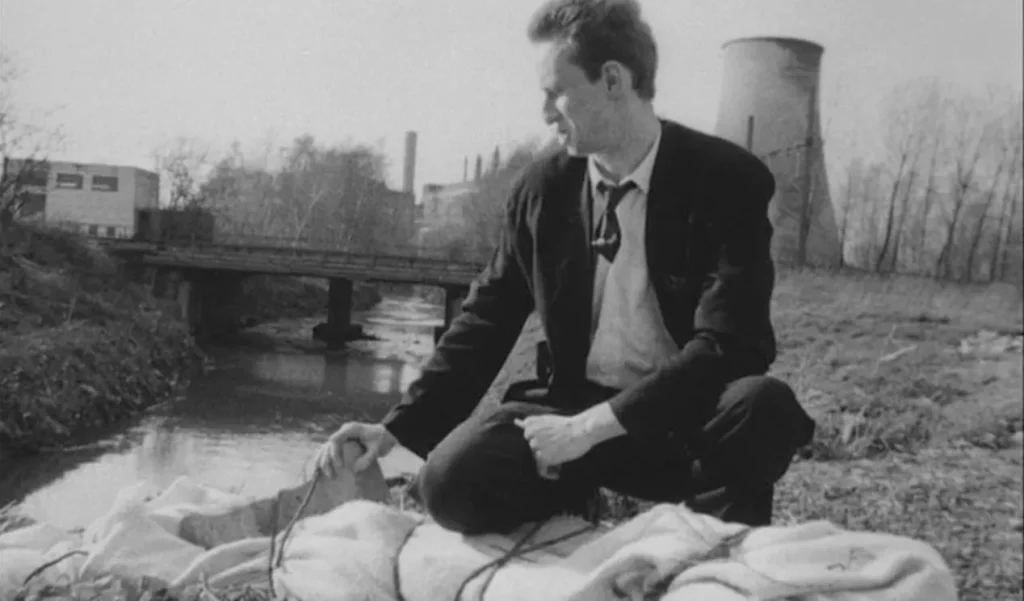
Man Bites Dog premiered at the Cannes Film Festival in 1992, with rave reviews hitting Rémy Belvaux from every angle. Despite the film’s still notorious reputation, an air of controversy still lingers, the film was even banned in Ireland and Sweden. Above every redeeming factor is the film’s sheer braveness. Even well-seasoned genre fans cannot say that the excess of sodomization and family annihilation is not testing. The valiant efforts to corrupt the screen are evident and certainly effective, particularly in regard to the ambitious nature of pov cinema and its relationship with audience participation. Classically, found footage derives from Mondo and Cinéma Vérité where the subject matter is treated with an educative view, akin to an exploration documentary. Through the camera crew falling into the lure of evil and accepting Ben’s action as the norm’, the barrier between screen and reality is blurred. Within this unplanned involvement and blended fiction is an inherent ruling that coerces the viewer into ceasing better judgments, questioning their lowbrow motives for watching some heinous material. Infamous films such as Cannibal Holocaust (1980) is an earlier example of such work, but Man Bites Dog has remained under the radar waiting to be rediscovered.
9- Banshee Chapter (Directed by Blair Erickson, 2013)
Anne (Katia Winter), an investigative journalist uses her skills to look into the puzzling disappearance of her friend who has supposedly ingested a top secret government substance. On her journey to revelation, she is led into the terrifying world of covert operations.

The Banshee Chapter is a true hidden gem. At heart, Blair Erickson’s directorial debut is a meaty Lovecraftian story that uses conspiracy theories in a hyper-stylized manner to create an interwoven web of lies, mistrust, and psychological torment. Within the film’s complicated sci-fi-ish extravaganza is a mysterious whodunit element that acts as both a distraction point and a serious part of the film’s backbone. The sheer ferocity of the film is a consequence of the complex relationship between truly horrifying imagery and a wicked soundscape that perfectly entwines a tense atmosphere with a strangely mythical landscape, mimicking the world of Stranger Things (2016-). One particularly potent image that acts as a recurring visual surrounds the presence of humanoid-like creatures who bear a strong resemblance to their formal living selves, but their hollowed eyes and gaunt skin take after a monster from your worst nightmare. Overall, the Banshee Chapter is entirely possessive, once you start watching you are completely devoted to getting to the bottom of this surreal, freakish mystery.
10- Megan is Missing (Directed by Michael Goi, 2011)
Megan Stewart (Rachel Quinn) is a popular high school student who one day decides to meet up with a ‘dreamy’ boy who she’s interacted with online. After Megan never returns, her best friend Amy Herman (Amber Perkins) makes it her mission to get to the bottom of what’s happened.
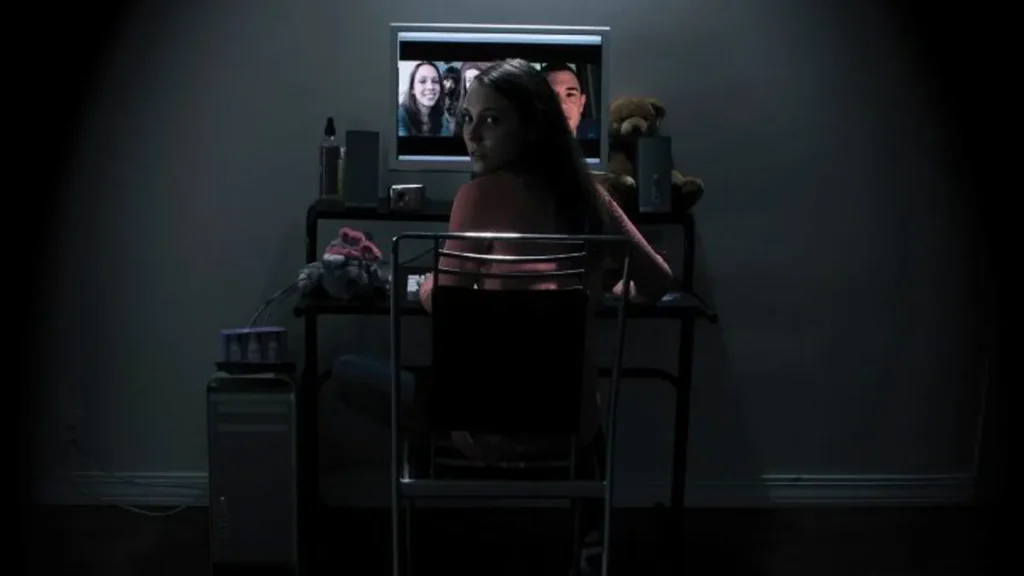
Megan is Missing started off as a micro-budget horror, filmed in 2006 with unknown actors, independent budgeting, and essentially supported by a one-man-band as director Michael Goi wrote, directed, co-produced, and edited the film. The film was shelved until 2011 when Anchor Bay Films gave it a limited release. Even then only a proportionally small number of people had viewed it, leaving Megan is Missing hard to source.
However, in 2020 the film blew up on Tik Tok, becoming a viral must-see which was always joined with a caption regarding the film as ‘the scariest movie in the world’ or ‘the most disturbing horror’. And whilst the theatrics aren’t necessarily going to keep you awake at night, the natural dynamic between the characters and the found footage element genuinely gives the impression that the work is entirely real. The film relies on true horror. Goi does not involve ghosts, demons, pagan gods, or even any immortal ghouls to torment the viewer. Instead, we are met with an evil worse than them all- people. It’s clear from the start that Megan will not meet a pleasant end, but what is shown is more depraved than anyone could imagine, leaving a lingering mental scar on the viewer for a long, long while.
Looking for more top horror lists and reviews? Check out our blog here..

